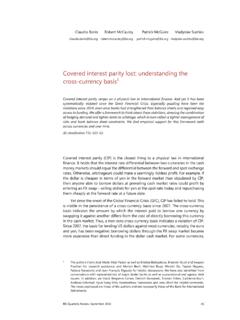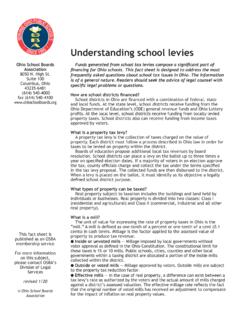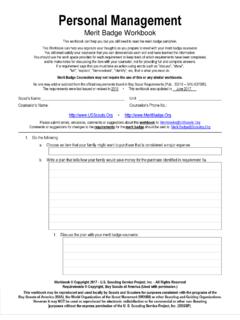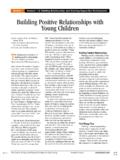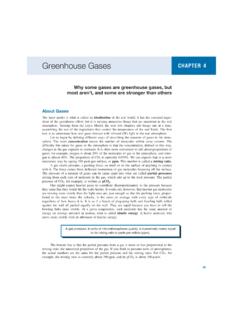Transcription of Number Bond Templates: Place Number Bond Template (or …
1 Number bond Templates: Place Number bond Template (or make one of your own) in a Sheet Protector or have it laminated, so students can reuse the Number bond Template to practice several problems using a Dry Erase Marker. A paper plate (as shown below) can also be used as a Number use buttons/pennies, etc. to model different problems (find missing Number in problem or result of both numbers put together). Please talk with your child s school-teacher in regards to how your child can use the Number bond Template at home to reinforce/practice their math learning and/or Required Fluencies. Number Bonds can be turned in different configurations (see pictures below using the numbers 2, 3, and 5): Some examples of using Number Bonds: Number bond : Equation: 9 + 3 = 12 Example: Child chooses Number card 12, break apart (decompose) 12 to make Number bond then write an equation such as 9 + 3 = 12.
2 Other possible equations: 6 + 6 = 12, 10 + 2 = 12, etc. Number bond : Equation: 5 + 5 + 5 = 15 (5 x 3 = 15) Example: Child chooses 15 and breaks apart (decomposes) into 3 equal numbers Number bond : Equation: 12 x 8 = 96 Example: Child chooses digit cards 9 and 6 to make the Number 96. Child breaks apart (decomposes) 96 by making a Number bond with 12 and 8. Number Cards 0-20 (use with Number bond Templates) Kindergarten and 1st Grade Students (addition): Cut apart numbers 1-20 and Place in a Ziploc Bag for storage. For Kindergarten, may want to Place numbers 1-10 in one Ziploc Bag and numbers 11-20 in another Ziploc Bag to use later as children progress through the school-year working with these numbers. Draw a card and make a Number bond to represent the Number drawn. Then write an equation to represent the Number bond .
3 2nd & 3rd Grade Students (addition and/or subtraction): Cut apart numbers (digits) 0-9 and Place in a Ziploc Bag for storage. Draw two digit/ Number cards to make a 2-digit Number or three cards to make a 3-digit Number . Make a Number bond to represent the 2- or 3-digit Number formed (decompose the Number ). Then write an equation to represent the Number bond . As students learn multiplication, students can draw 2 Number cards (using 1-12) and multiply the numbers drawn. Number bond Template : Number Sentence/Equation: Number Cards 0-20 (may use with Number Bonds and 5- & 10-Frames) O 1 2 3 4 5 6 7 8 9 10 11 12 13 14 15 16 17 18 19 20 5- & 10-Frames; Double 10-Frame (Kindergarten & 1st Grade): Please talk with your child s school-teacher in regards to how your child can use the 5-Frame, 10-Frame, or Double 10-Frame Templates at home to reinforce/practice their math learning and/or Required Fluencies.
4 Parking Lot Activity (see picture below): use 5- or Use Number cards 0-5 (with 5-Frame) or 0-10 (with 10-Frame); draw a Number card. Place race cars (on the Parking Lot ) or other objects such as paper clips, pennies, buttons, etc. to represent the Number drawn. Use what interests your child and objects you have at home. Ask your child the following questions: o What is 1 more than the Number drawn (represented with objects)? - Kindergarten o What is 1 less than (or 1 fewer than) the Number drawn (represented with objects)? Kindergarten o How many more do you need to make 5 (using 5-Frame)? - Kindergarten o How many more do you need to make 10 (using 10-Frame)? Kindergarten & 1st Grade Double 10-Frame (see picture below representing the Number 12): Use Number cards 11-20; draw a Number card. Place objects such as paper clips, pennies, buttons, etc.
5 To represent the Number drawn. Use what interests your child and objects you have at home. May use a dry erase marker and draw dots. Ask your child the following questions: o What is 1 more than or 2 more than the Number drawn (represented with objects)? - Kindergarten o What is 1 less than (or 1 fewer than) or 2 less than the Number drawn (represented with objects)? Kindergarten o How many more do you need to make 20? - Kindergarten & 1st Grade Then write equation (example: 12 + 8 = 20) o Is the Number odd or even? Kindergarten & 1st Grade o Is the Number a double? (example: 12 is Number + 6 = 12; double 6 = 12) 1st grade Have your child make their own double 10-frames representing each of the numbers 11-20, then use as flash cards to match the dot card with the Number card. 5-Frame Template : Number Sentence/Equation: 10-Frame Template Number Sentence/Equation: Double 10-Frame Template (use to represent Teen Numbers) Number Sentence/Equation: Subitizing (Kindergarten or Grade 1): The ability to see a small amount of objects and know how many there are without counting.
6 For example, rolling dice when rolling a 6-sided die, without counting the dots on the die, you know there are 5 dots when you roll the Number 5. Students develop the ability to subitize by using pattern recognition skills. For example, refer to the 7 dots below: A child looking at this pattern doesn t usually see 7 dots, but instead sees a 1 and 6 or 2 and 5. Dominoes can also be used to practice subitizing . Dot Cards (Kindergarten or Grade 1): Cut out the different circles of dots. Use the Number cards 1-9. Have your child match the circle of dots with the Number card (practice subitizing ) Dot Cards (Kindergarten or Grade 1): Cut out the cards of dots below. Use the Number cards 11-19 to play the game Ten and Some More . Have your child match dot cards with the Number cards.
7
